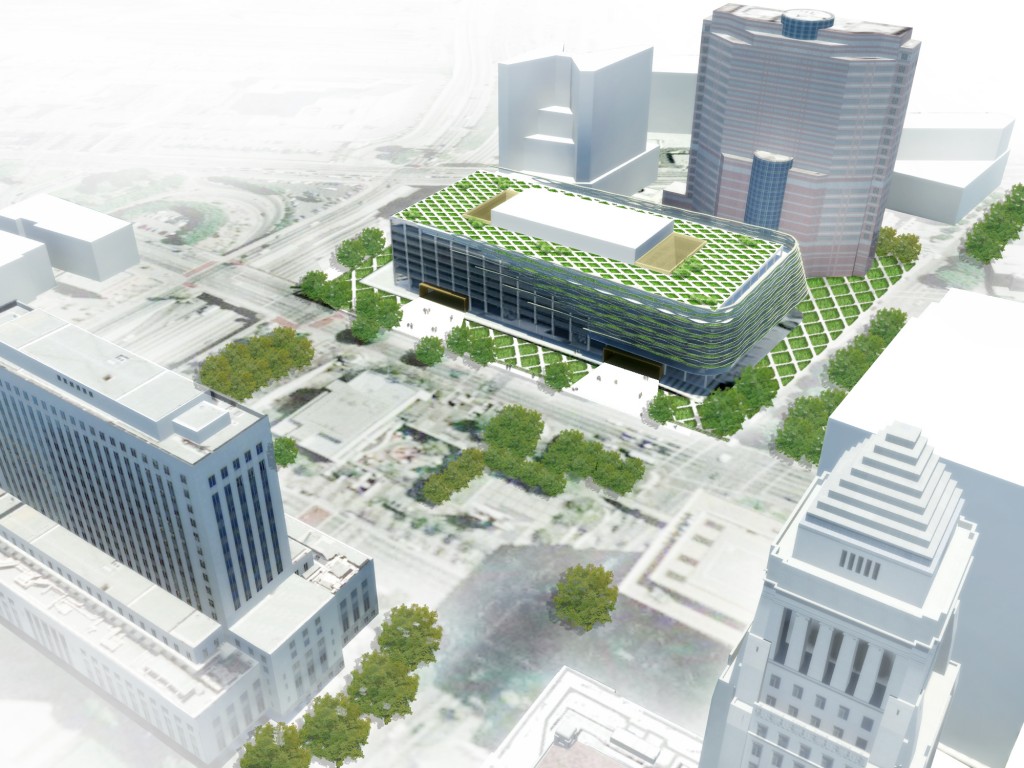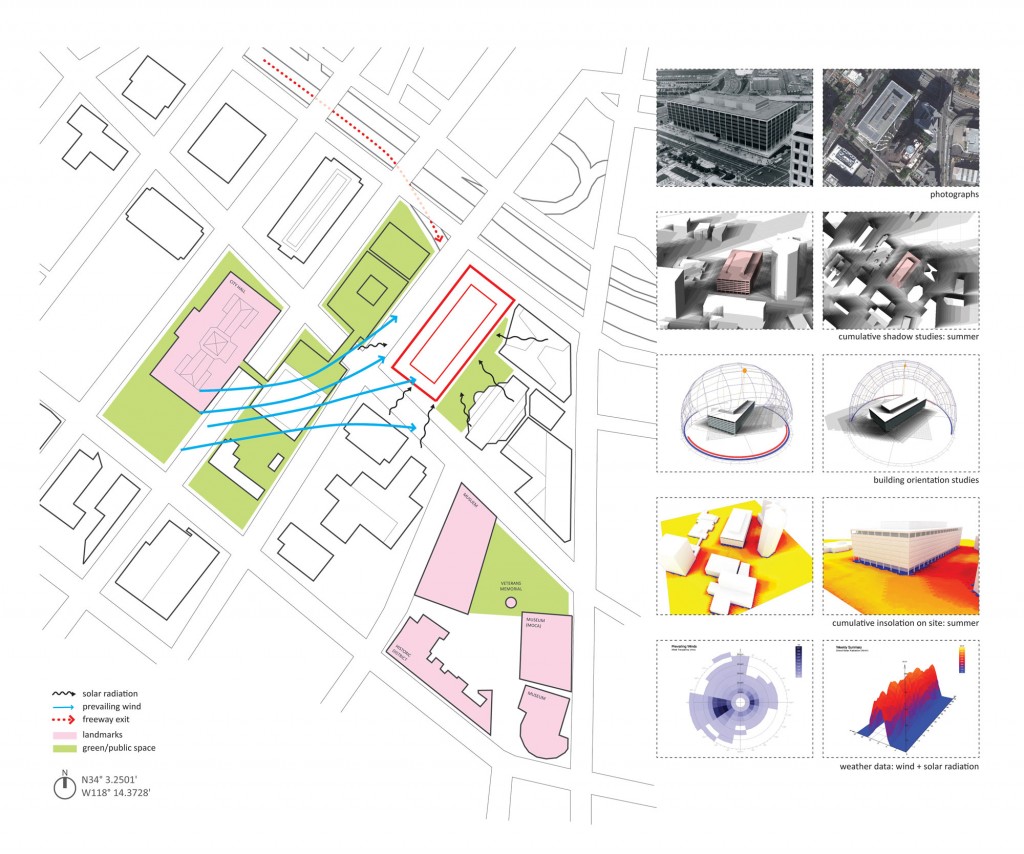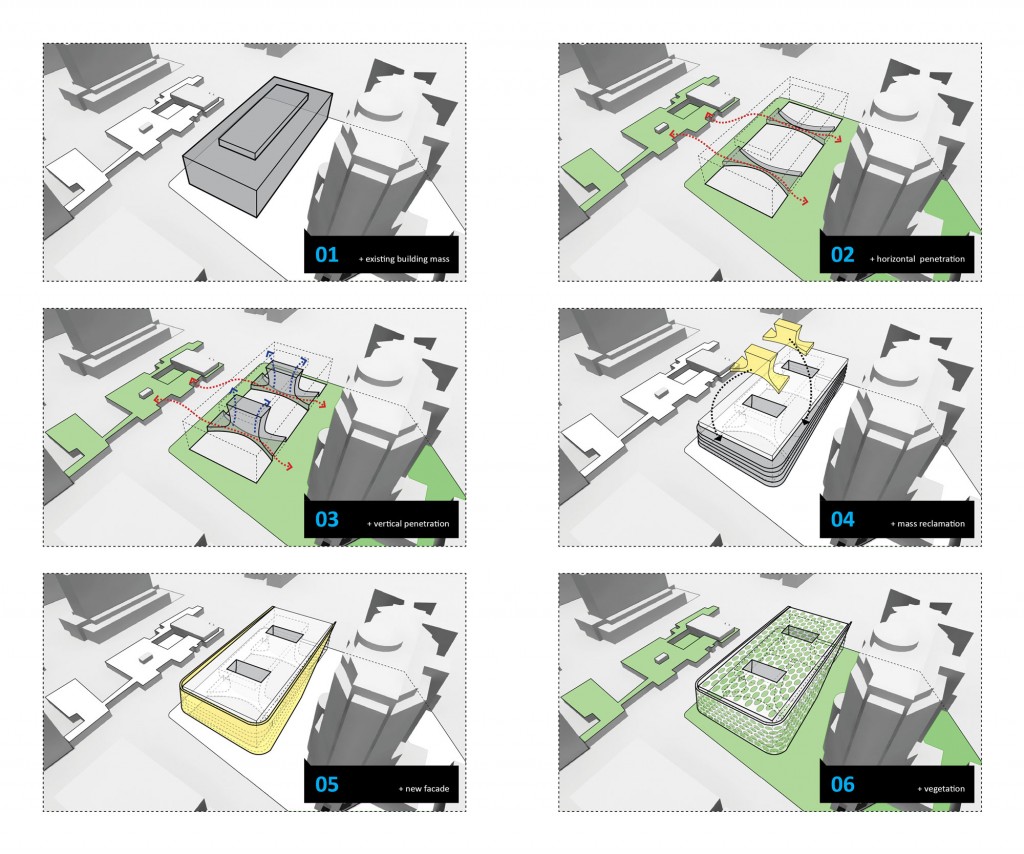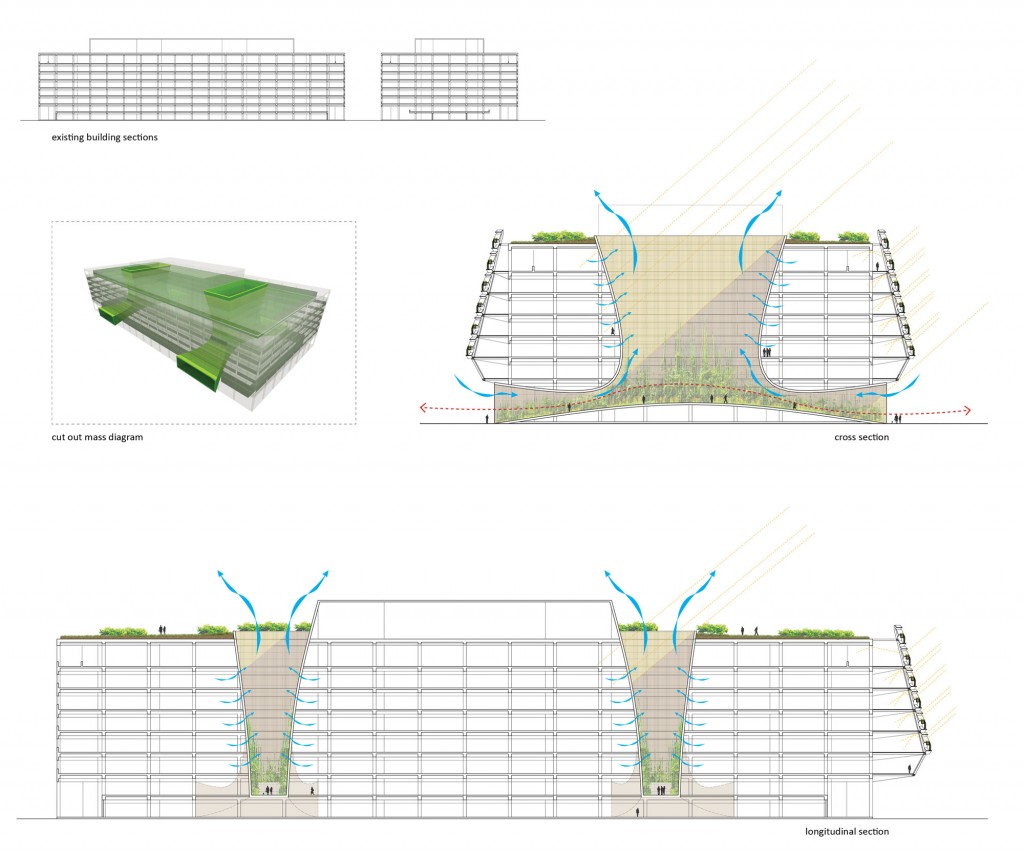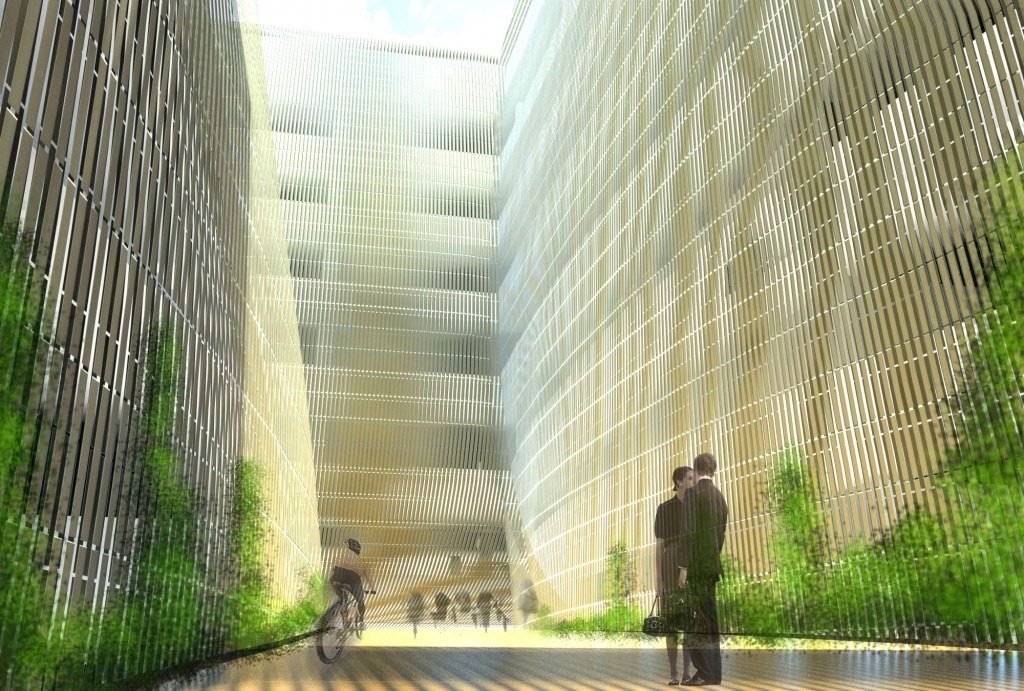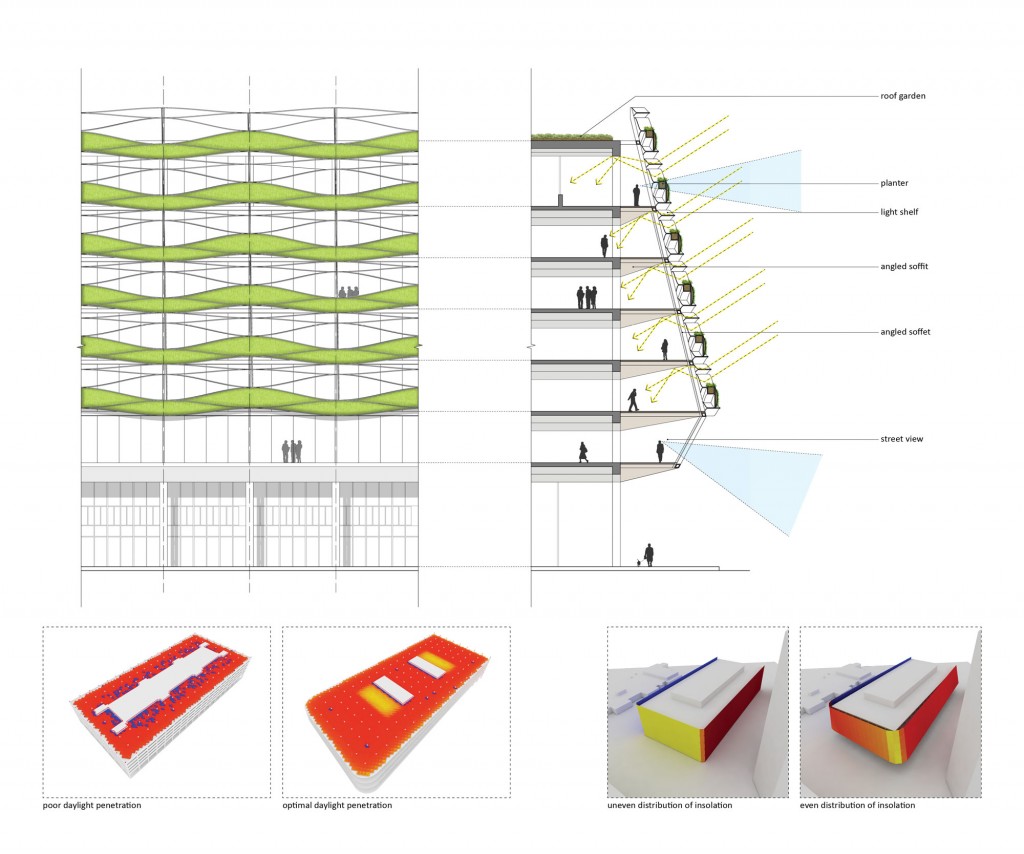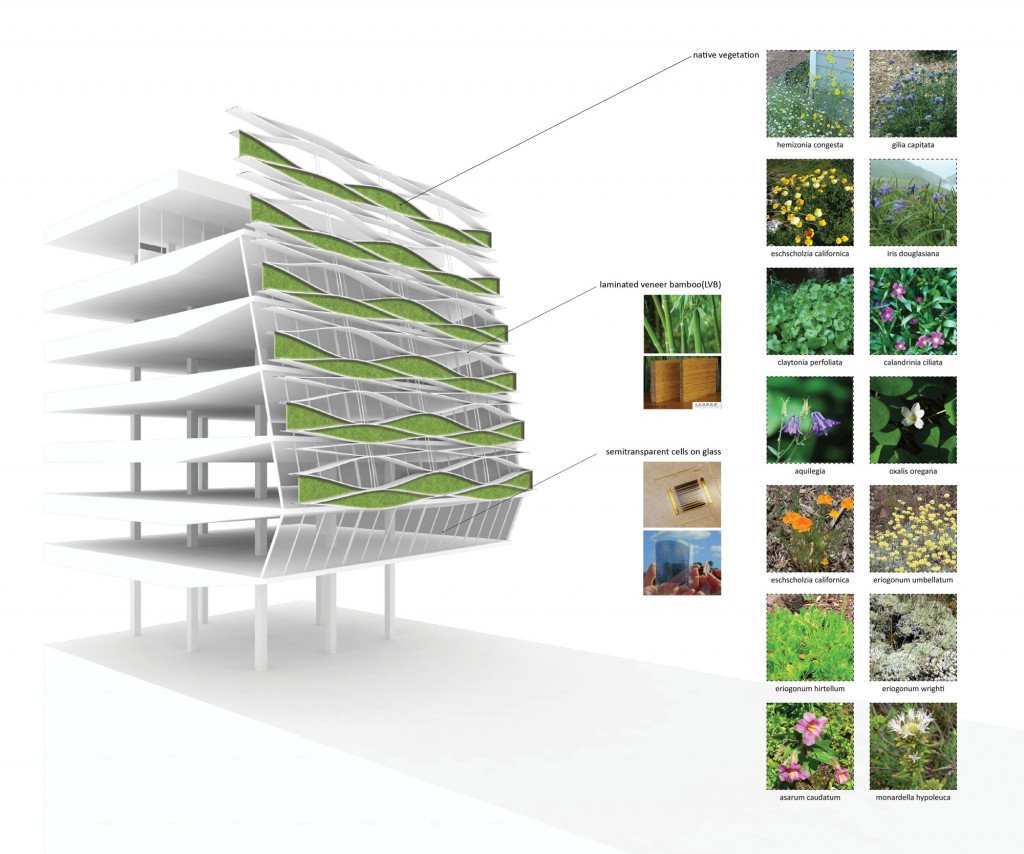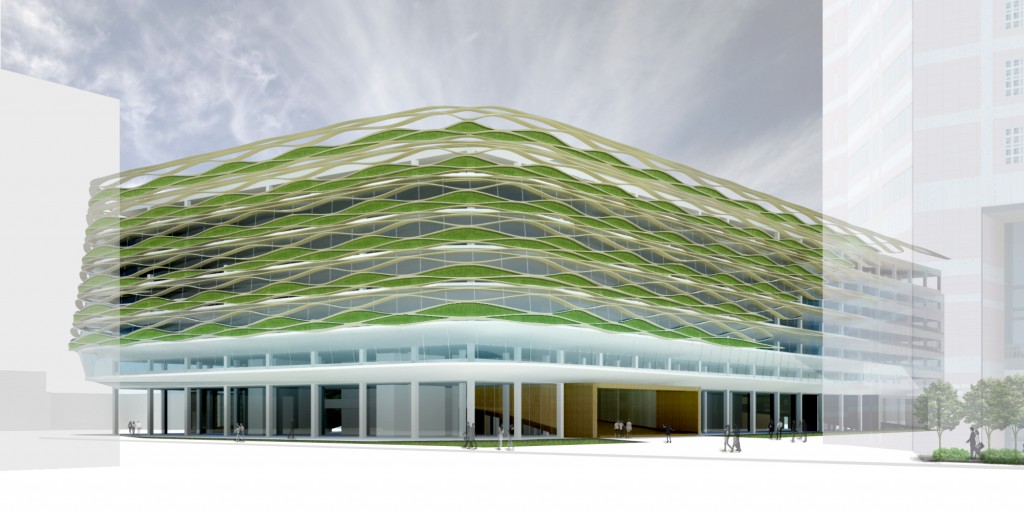neoArcologies strategically re-appropriates parts of the existing building in order to convert it to a built environment that fosters a culture of good health and reduced impact on the environment. In addition, neoArcologies attempts to project into the development of different building technologies to present where the future of “adaptive reuse” lies. It is also assumed that ample amount of technological solutions already exist and that it is a matter of appropriately utilizing such solutions. One can forecast, to a certain degree, what kind of design and cultural opportunities these technological developments can provide.
For instance, the existing massive floor slabs presented some obvious lack of comfortable daylight distribution and natural ventilation. As a response to this problem, neoArcologies proposes to vertically and horizontally puncture the existing mass. The same removed mass will then be reclaimed at the southern side of the building. These are few simple yet effective solutions that will ensure an even distribution of daylight both at the periphery and center of the floor plates.
The relocated mass reemerges as an addition in a series of receding floor plates equipped with highly engineered building skin. The new building skin comprises of three major parts: high performance floor-to-ceiling glazing that contains photovoltaic tinting/inserts, light shelves made out of sustainable LVB (Laminated Veneer Bamboo), and vertical planters and panels for vegetation. The vegetation serves as an effective sunscreen trellis and as a cultural device that brings awareness to the wide variety of indigenous plants of Los Angeles.
The description of the vegetation brings light to the fundamental effort to embrace a bottom-up approach in understanding adaptive reuse. The vegetated building envelope is intended to independently grow into its own ecosystem. Only then can one understand its purpose in the context of the building, the city, and even the world. The design positions neoArcologies as a small but critical part of a constellation of immensely varying scales of ecosystems. Site-specific data is gathered to inform every working piece of the design. The key is to understand the appropriate elements in parts and then to bring all of them together to create the ideal “top-level” system. neoArcologies is ultimately the “top-level” system.

